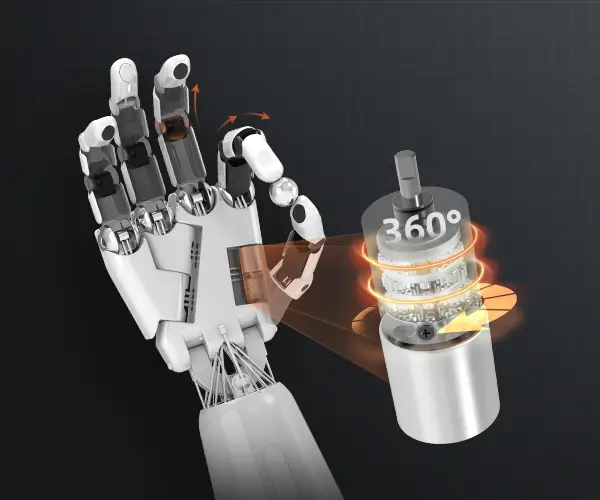Does a Servo Motor Need a Gearbox? Unpacking the Mystery for Precision and Power
When it comes to building robots, CNC machines, or automated systems, components like servo motors are central players. They act as the electrical muscles that make precise movements possible. But a common question that pops up among engineers, hobbyists, and tech enthusiasts alike is: does a servo motor need a gearbox? The answer isn't a straightforward yes or no; instead, it depends on various factors, including your project's specific requirements, the motor’s characteristics, and the desired performance.

Understanding Servo Motors
To grasp the role of gearboxes, first, let’s quickly revisit what a servo motor is. Unlike regular electric motors, servo motors are designed for high precision and control. They can accurately turn to a particular position, hold steady, and quickly respond to control signals. This precision is achieved through feedback mechanisms, often involving encoders, which tell the control system exactly where the motor shaft is at any moment.
Servo motors come in various sizes and power ratings, from tiny RC servos in hobbyist drones to massive industrial servo drives controlling robotic arms. Their main advantage is their ability to deliver precise rotational positioning with high torque at the start and consistent control throughout their operation.
Why Consider a Gearbox?
Gears are mechanical devices that transmit torque and modify the speed or direction of rotation. When combined with a motor, a gearbox can change the relationship between input and output, usually to increase torque or reduce speed. But why would one need to incorporate this into a servo-driven system?
The core purpose of adding a gearbox to a servo motor revolves around optimizing performance for specific use cases.
Increasing Torque at Low Speeds In applications where high torque at low speeds is essential, gearboxes act as force multipliers. For example, robotic arms that need to lift heavy objects often rely on gearboxes to generate sufficient force without overloading the motor. Achieving Precise Positioning with High Reduction Ratios When the application demands extremely fine positioning, a gearbox can effectively 'slow down' the motor’s rotation, enabling more precise control. This is particularly useful in CNC machines, micro-assembly robots, or camera gimbal systems. Protecting the Motor and Enhancing Longevity Gearboxes can shield the motor from excessive loads or sudden shocks, reducing wear and tear, especially in demanding environments.
However, adding a gearbox isn't always necessary or advantageous. For many applications, the servo motor itself comes with enough torque and resolution, eliminating the need for a gearbox altogether. Whether to include one depends on your specific technical goals.
When Might You Not Need a Gearbox?
If your application involves moderate speeds and torque within the capabilities of a standard servo motor, then skipping the gearbox makes the system simpler, lighter, and more reliable. For example, hobbyist drones or small-scale automation often employ servo motors without gearboxes because the motors are inherently capable of handling the required tasks.
Moreover, omitting a gearbox can improve efficiency since gearboxes inherently introduce some mechanical loss due to friction and inefficiencies. They can also add complexity, increase size, and introduce points of failure.
Key Factors to Consider When Deciding
To determine whether your servo motor needs a gearbox, weigh these key factors:
Torque Requirements: Will the motor need to exert a high amount of torque beyond its inherent capability? Speed Expectations: Are you aiming for very slow, precise movements, or high-speed rotations? Resolution and Accuracy: Do you require extremely fine positioning that benefits from gear reduction? Size and Weight Constraints: Is keeping the setup compact and lightweight critical for your application? Cost and Maintenance: Is reducing initial costs or simplifying maintenance a priority?
Conclusion of Part 1
In the quest to build efficient, precise, and reliable systems, understanding whether a servo motor should be paired with a gearbox is fundamental. It’s a decision informed by the demands of your project, the capabilities of your servo motor, and your performance goals. In the next part, we'll explore specific case studies, detailed comparisons, and expert recommendations to help you make the best choice.
Established in 2005, Kpower has been dedicated to a professional compact motion unit manufacturer, headquartered in Dongguan, Guangdong Province, China.




































